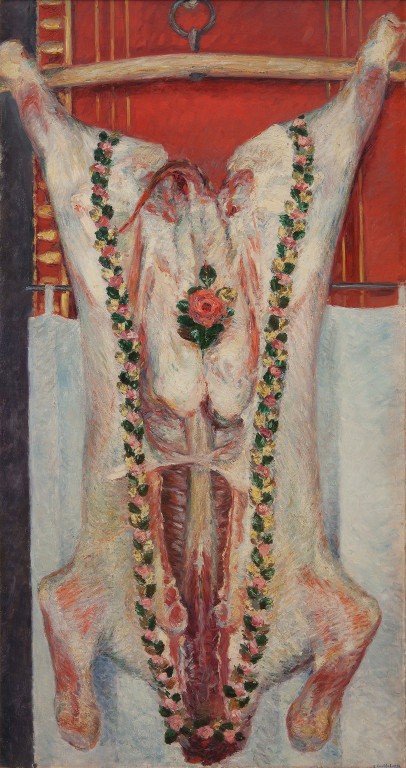What strikes me immediately is the pink. It’s everywhere in Calf in a Butcher’s Shop. We think of pink as being such a lovely, gentle color, and associate it with the feminine, flowers, and even sweets. But here the pink is also linked to death, blood, and the viscera. The same pinks, corals, and salmon colors used on the central rose and some of the smaller flowers of the garland also describe the raw interior of the carcass and seep through the white of its skinned exterior. And on closer inspection the white curtain behind the carcass is tinged not just with shadowy blues but also with little strokes of pink, as if stained with blood that can’t be washed away. While the space of the overall composition is shallow and flat, the paint coagulates into a thick impasto in the single plucked rosebud and in the garland, as well as down by the gristle of the stumpy neck. The flowers and the carcass evoke such different smells, too, and one imagines the stench of meat surely overpowering the floral scent of the delicate flowers. There’s a thin line between beauty and disgust, one that runs through the other two paintings of meat in this room that are also suffused with pinks and beautifully lit: the Calf’s Head and Ox Tongue and the Cut of Beef. Works like these seem to be a sly wink at the French term for still life—nature morte, or dead nature—and make me wonder for whom they were intended. Where would such a monumental painting of a slaughtered calf be displayed, and what was the reaction of Caillebotte’s audience to it?
Margaret M. Doyle
Associate Curator, Department of Exhibition Programs, National Gallery of Art

